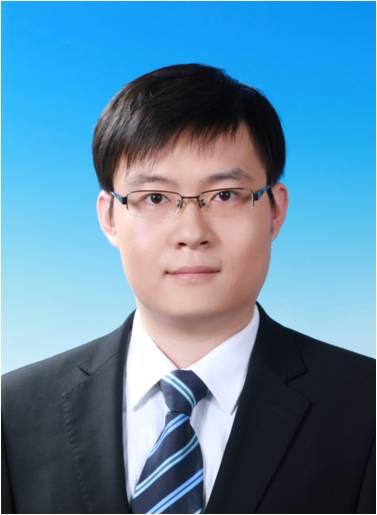School of Environmental Science and Engineering
Associate professor
Environmental Engineering
 xinzhao@tju.edu.cn
xinzhao@tju.edu.cn
 Building 59, School of Environmental Science and Engineering, Tianjin University, Haihe Education Park, Tianjin 300350, P.R. China
Building 59, School of Environmental Science and Engineering, Tianjin University, Haihe Education Park, Tianjin 300350, P.R. China
 300350
300350
Zhao Xin received his B.S. and Ph.D. degrees from School of Environment, Tsinghua University, where he studied for 10 years from 2004 to 2014. After that, he joined School of Environmental Science and Engineering, Tianjin University, as an assistant professor.
Dr. Zhao’s research interests are water quality analysis and evaluation, water treatment technologies, and wastewater reclamation and reuse. He is currently working on the fabrication of nanofiltration membrane with new materials, its removal mechanisms of pollutants in water, and its application in advanced water and wastewater treatment. He presides and participates in the research projects including the National Science Fund of China, the National Key Research and Development Program of China, etc.
- Doctor of Engineering| Tsinghua University| Environmental Science and Engineering| 2014
- Bachelor of Engineering| Tsinghua University| Environmental Engineering| 2008
- Electrochemical technology for water treatment
- Membrane technology for water and wastewater treatment
- Water quality fingerprint analysis
- Wastewater reclamation and reuse
- 中国环境科学学会水处理与回用专业委员会委员
-
2022.6-Now
School of Environmental Science and Engineering | Tianjin University | Associate Professor -
2019.10-2020.7
Georgia Institute of Technology | Visiting scholar -
2014.7-2022.6
School of Environmental Science and Engineering | Tianjin University | Assistant Professor
- Papers
- [1] Mo Yinghui*, Zhao Xin, Shen Yue-Xiao. Cation-dependent structural instability of graphene oxide membranes and its effect on membrane separation performance. Desalination, 2016, 399: 40-46.
- [2] Song Yarong, Tian Yimei, Zhao Xin*, Guo Hao, Zhang Haiya. Corrosion process of ductile iron with cement mortar linings as coatings in reclaimed water. International Journal of Electrochemical Science, 2016, 11(8): 7031-7047.
-
- [3] Hu Hong-Ying*, Du Ye, Wu Qian-Yuan*, Zhao Xin, Tang Xin, Chen Zhuo. Differences in dissolved organic matter between reclaimed water source and drinking water source. Science of the Total Environment, 2016, 551-552: 133-142.
- [4] Zhang Cong, Wang Can*, Zhao Xin*, Hakizimana Israel. Effect of resistance difference on distribution of antibiotics in bacterial cell and conjugative gene transfer risks during electrochemical flow through reaction. Science of the Total Environment, 2023, 878: 163142.
- [5] Liang Zimeng, Zhao Xin*, Huang Weiqi, Qi Huabiao, Wang Can. Removal of antibiotics with different charges in water by graphene oxide membranes. Water Reuse, 2023, 13(2): 220-232.
- [6] Zhao Xin, Hu Hong-Ying*, Yu Tong, Su Chang, Jiang Haochi, Liu Shuming. Effect of different molecular weight organic components on the increase of microbial growth potential of secondary effluent by ozonation. Journal of Environmental Sciences, 2014, 26(11): 2190-2197.
- [7] Zhao Xin, Huang Huang, Hu Hong-Ying*, Su Chang, Zhao Ji, Liu Shuming. Increase of microbial growth potential in municipal secondary effluent by coagulation. Chemosphere, 2014, 109(C): 14-19.
- [8] Li Yanchao, Wang Can*, Pan Shuang, Zhao Xin*, Liu Ning. Mn doping improves in-situ H2O2 generation and activation in electro-Fenton process by Fe/Mn@CC cathode using high-temperature shock technique. Chemosphere, 2022, 307: 136074.
- [9] Pan Shuang, Liu Chang, Li Yanchao, Wang Can*, Cui Xiaoya, Liu Ning, Zhang Cong, Hakizimana Israel, Zhao Xin, Liu Weidi, Chen Yanan*. Ultrafast self-assembly Fe2O3 nanoparticles confined in carbon layers toward robust heterogeneous electro-Fenton reaction. Electrochimica Acta, 2022, 433: 141262.
- [10] Wang Yongchao, Wang Can*, Han Mengfei, Tong Zhen, Hu Xurui, Lin Yuting, Zhao Xin*. Reduction of biofilm adhesion strength by adjusting the characteristics of biofilms through enzymatic quorum quenching. Chemosphere, 2022, 288: 132465.
- [11] Zhao Xin*, Che Yuang, Mo Yinghui, Huang Weiqi, Wang Can. Fabrication of PEI modified GO/MXene composite membrane and its application in removing metal cations from water. Journal of Membrane Science, 2021, 640: 119847.
- [12] Zhao Xin, Hu Hong-Ying*, Liu Shuming, Jiang Feng, Shi Xiaolei, Li Mingtang, Xu Xueqiao. Improvement of the assimilable organic carbon (AOC) analytical method for reclaimed water. Frontiers of Environmental Science and Engineering, 2013, 7(4): 483-491.
- [13] Chen Min, Zhao Xin*, Wang Can*, Pan Shuang, Zhang Cong, Wang Yingcai. Electrochemical oxidation of reverse osmosis concentrates using macroporous Ti-ENTA/SnO2-Sb flow-through anode:degradation performance, energy efficiency and toxicity assessment. Journal of Hazardous Materials, 2021, 401: 123295.
- [14] Li Han, Tian Yimei, Zhao Xin*, Mo Yinghui, Qi Huabiao. Competition of co-existing cations to eliminate negative effect of Na+ on graphene oxide membrane structure and stabilize the separation performance. Separation and Purification Technology, 2021, 258: 118020.
- [15] Chen Min, Pan Shuang, Zhang Cong, Wang Can*, Zhang Weiqiu, Chen Zefang, Zhao Xin*, Zhao Yingxin. Electrochemical oxidation of reverse osmosis concentrates using enhanced TiO2-NTA/SnO2-Sb anodes with/without PbO2 layer. Chemical Engineering Journal, 2020, 399: 125756.
- [16] Chen Min, Wang Can*, Zhao Xin*, Wang Yingcai, Zhang Weiqiu, Chen Zefang, Meng Xiaoyang, Luo Jinming, Crittenden John. Development of a highly efficient electrochemical flow-through anode based on inner in-site enhanced TiO2-nanotubes array. Environment International, 2020, 140: 105813.
- [17] Qi Huabiao, Zhao Xin*, Li Han, Che Yuang, Wang Can. Impact of monovalent cations on the separation performance of graphene oxide membrane for different organic matters. Water Science and Technology, 2020, 82(8): 1560-1569.
- [18] Mo Yinghui, Zhao Xin*, Yuan Tingting, He Benqiao. Factors affecting the separation performance of graphene oxide membranes: mechanical support, properties of graophene oxide, and exotic species. Journal of Chemical Technology and Biotechnology, 2018, 93(5): 1388-1393.






